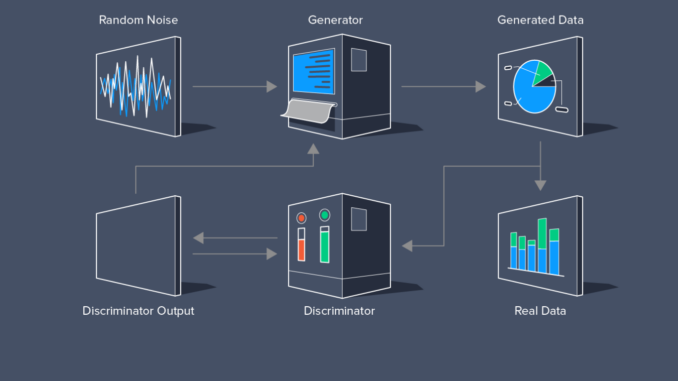
A Generative Adversarial Network (GAN) is a class of machine learning frameworks designed by Ian Goodfellow and his colleagues in 2014.
GANs consist of two neural networks, the generator and the discriminator, that are trained simultaneously through adversarial processes.









Here’s a breakdown of the two components:
Generator:
The generator’s goal is to generate data that is similar to real data. It takes random noise as input and transforms it into data samples (e.g., images, text).
During training, the generator improves by trying to produce data that can fool the discriminator into believing that it is real.
Discriminator:
The discriminator’s goal is to distinguish between real data and fake data generated by the generator.
It takes input data and outputs a probability indicating whether the data is real or fake.
How GANs Work:
Training Process:
Initially, the generator produces fake data from random noise.
The discriminator evaluates this data along with real data and provides feedback on whether the data is real or fake.
The generator uses this feedback to improve its ability to create more realistic data.
Simultaneously, the discriminator also improves by learning to better distinguish between real and fake data.
Adversarial Nature:
The two networks are in constant competition: the generator tries to create data that looks real, while the discriminator tries to identify fake data.
This adversarial process helps both networks improve over time.
Applications of GANs:
Image Generation: GANs can generate realistic images, often used in art and entertainment.
Data Augmentation: Creating synthetic data to augment training datasets for machine learning models.
Super-Resolution: Enhancing the resolution of images.
Style Transfer: Applying the style of one image to the content of another.
Text-to-Image Synthesis: Generating images from textual descriptions.
Video Generation: Creating videos from sequences of generated images.
Challenges:
Training Stability: GANs can be difficult to train, often requiring careful tuning of hyperparameters.
Mode Collapse: The generator may produce limited varieties of data, failing to capture the diversity of real data.
Despite these challenges, GANs have revolutionized the field of generative modeling and have a wide range of applications in various domains.

Leave a Reply